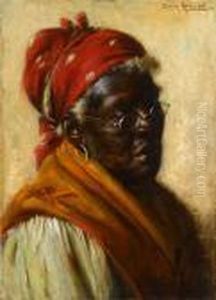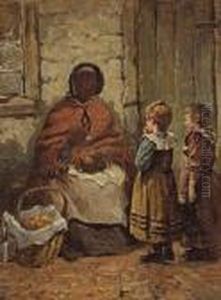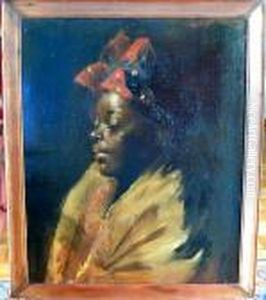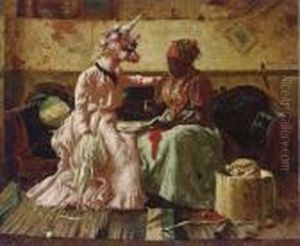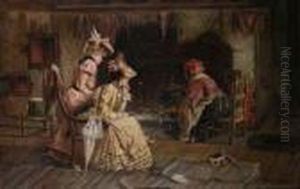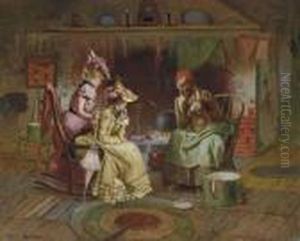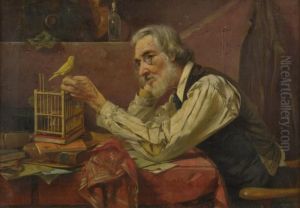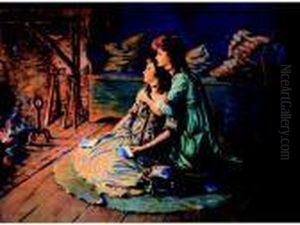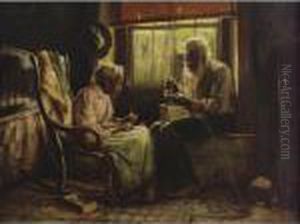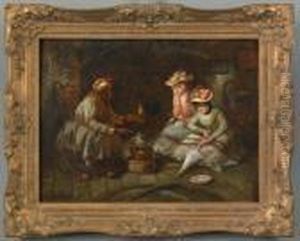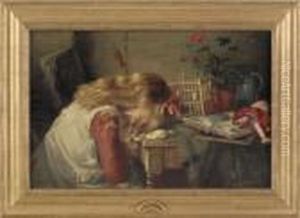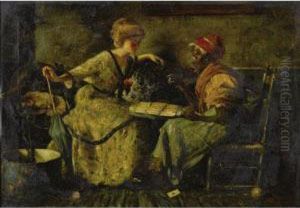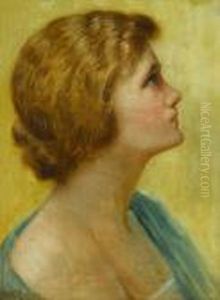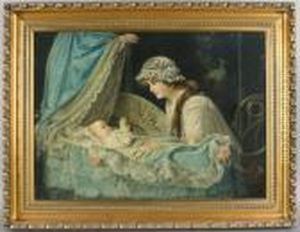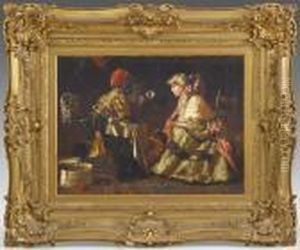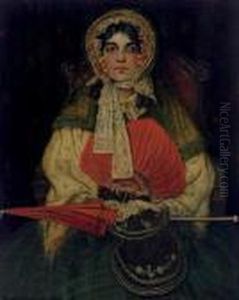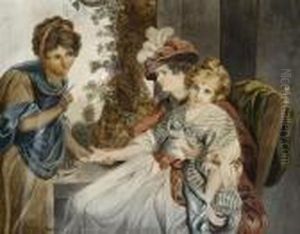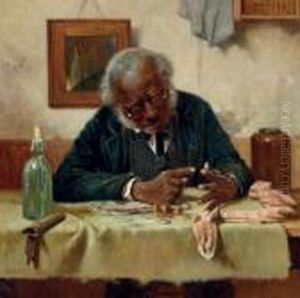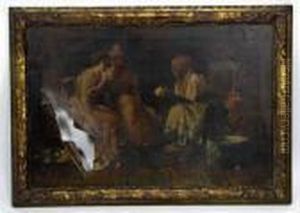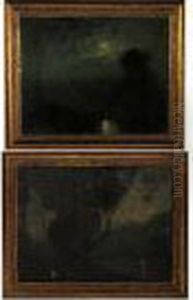Harry Herman Roseland Paintings
Harry Herman Roseland was an American painter known primarily for his genre scenes, which often depicted African American life in the post-Civil War South. Born in approximately 1867 in Brooklyn, New York, Roseland’s formative years as an artist were spent in the vibrant cultural environment of New York City at the turn of the 20th century. He did not receive extensive formal art training but did study briefly with the well-known artist J.B. Whittaker.
Roseland's work was characterized by its narrative quality, often telling a story through the scenes he depicted. He was particularly adept at capturing the emotional nuances of his subjects, which ranged from moments of quiet domesticity to the more charged interactions of his various characters. Many of his paintings focused on the lives of poor African Americans, which was an unusual subject choice for an artist of his time and background, making his work significant not only for its artistic merit but also for its sociocultural commentary.
Throughout his career, Roseland found success and his works were exhibited at various institutions, including the Brooklyn Art Association and the National Academy of Design. His paintings were also popular in their time for reproduction in prints, calendars, and postcards, which helped to disseminate his images widely and contributed to his popularity.
Roseland continued to paint well into his later years, and his body of work remains an important record of his era's social conditions and attitudes. He passed away in 1950, leaving behind a legacy that is appreciated by both art historians and collectors of Americana. Today, his paintings can be found in the collections of various art museums and continue to be studied for their portrayal of post-Civil War American life and the African American experience.






